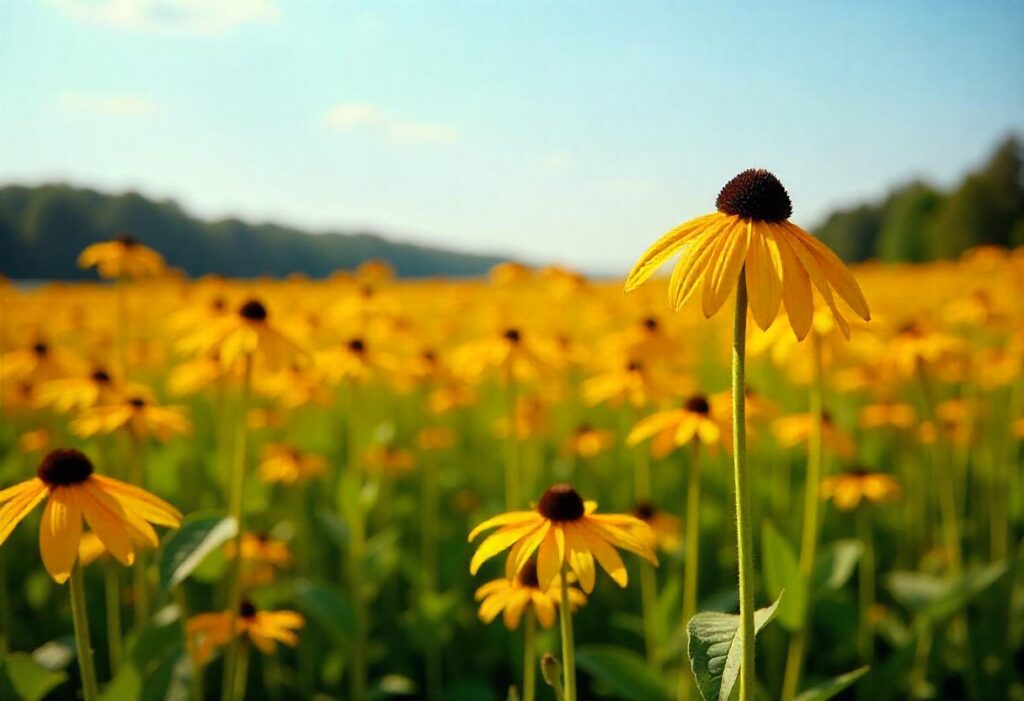Let’s explore characteristics and benefits of perennials—a plant group sure to delight gardening enthusiasts.
Nature epitomizes the eternal cycle of birth and renewal, making it an ideal starting point to discuss adaptability, defined as an organism’s ability to adjust to its environment and circumstances.
This concept, deeply rooted in life itself, applies not only to humans but to every living being, including plants and animals. Perennials serve as an intriguing example of this idea. These quiet and understated organisms witness the process of life as they bloom and grow year after year, requiring minimal care.
In this article, we’ll examine the features of perennials and highlight why they are an excellent choice for creating vibrant balconies, gardens, and terraces throughout the year.
What is a perennial?
Perennials are plants that live for more than two years. In contrast to annuals, which complete their life cycle in a single season, and biennials that take two years to bloom and die, perennials reappear each year, often expanding vigorously. The life cycles of these plants contribute continuity to the landscape and offer benefits that extend far beyond their floral beauty.

A wise long-term investment
Skilled gardeners recognize the value of perennials as a long-term investment. Take Echinacea Purpurea as an example: once planted, this resilient species will multiply over time, generating new plants that can easily be relocated in the garden. Each spring, the same plant returns, bringing fresh blooms without the need for constant replanting or sowing, unlike annuals. Adopting perennials is undoubtedly practical—they are hardy and save both time and money through their natural multiplication.
The power of natural propagation
As previously mentioned, many perennials have a remarkable ability to propagate naturally, whether through seeds or rhizomes.
Rudbeckia is one such plant; it can self-sow and utilizes its root system to spread. This inherent capacity for expansion is a hallmark of perennials, enabling them to occupy new areas without human assistance. The significance of this trait is clear: self-propagating plants create a self-sustaining system that can grow and adapt based on the environment’s requirements. In essence, perennials establish a balanced ecological microcosm, where every element fulfills a role that safeguards the health of the whole system. A soil with abundant perennial roots evolves into a resilient ecosystem, sustaining itself with minimal need for fertilizers or human help.
This leads to a form of “low maintenance gardening,” where plants synergize, sharing nutrients and protecting the soil from erosion.
Environmental benefits: A step toward sustainability
Another crucial aspect to consider is perennials’ role in promoting environmental sustainability. As long-lived plants, they greatly lessen the demand for resources like water, fertilizers, and pesticides. Being more resistant to diseases than annuals and biennials, perennials require less chemical intervention, supporting eco-friendlier gardening approaches.
Moreover, their deep root systems stabilize the soil, preventing erosion and enhancing soil health over time.
Certain perennials, like white clover and alfalfa, develop deep roots that facilitate water drainage and enrich the soil with nitrogen—an essential nutrient for numerous plants. This beneficial cycle reduces the need for external inputs like compost or soil amendments while fostering a model of regenerative gardening and agriculture.
Examples of perennial plants
There’s a diverse range of perennial species, each with unique traits that make them suitable for various climates and growth conditions.
One of the most well-known is Echinacea Purpurea, a hearty flower with striking purple blooms, recognized for its medicinal qualities and ability to attract pollinators. Another classic example is Lavender, which has a calming scent and is notably drought-resistant.
Sedum thrives in poor, rocky soils due to its ability to store water in its fleshy leaves. Then there’s Rudbeckia, celebrated for its bright yellow daisy-like flowers and self-spreading nature.
Phlox, another easy-care perennial, yields vibrant blooms year after year. Lastly, we should highlight garlic, absinthe, artichoke, and turmeric—often culinary stars.

